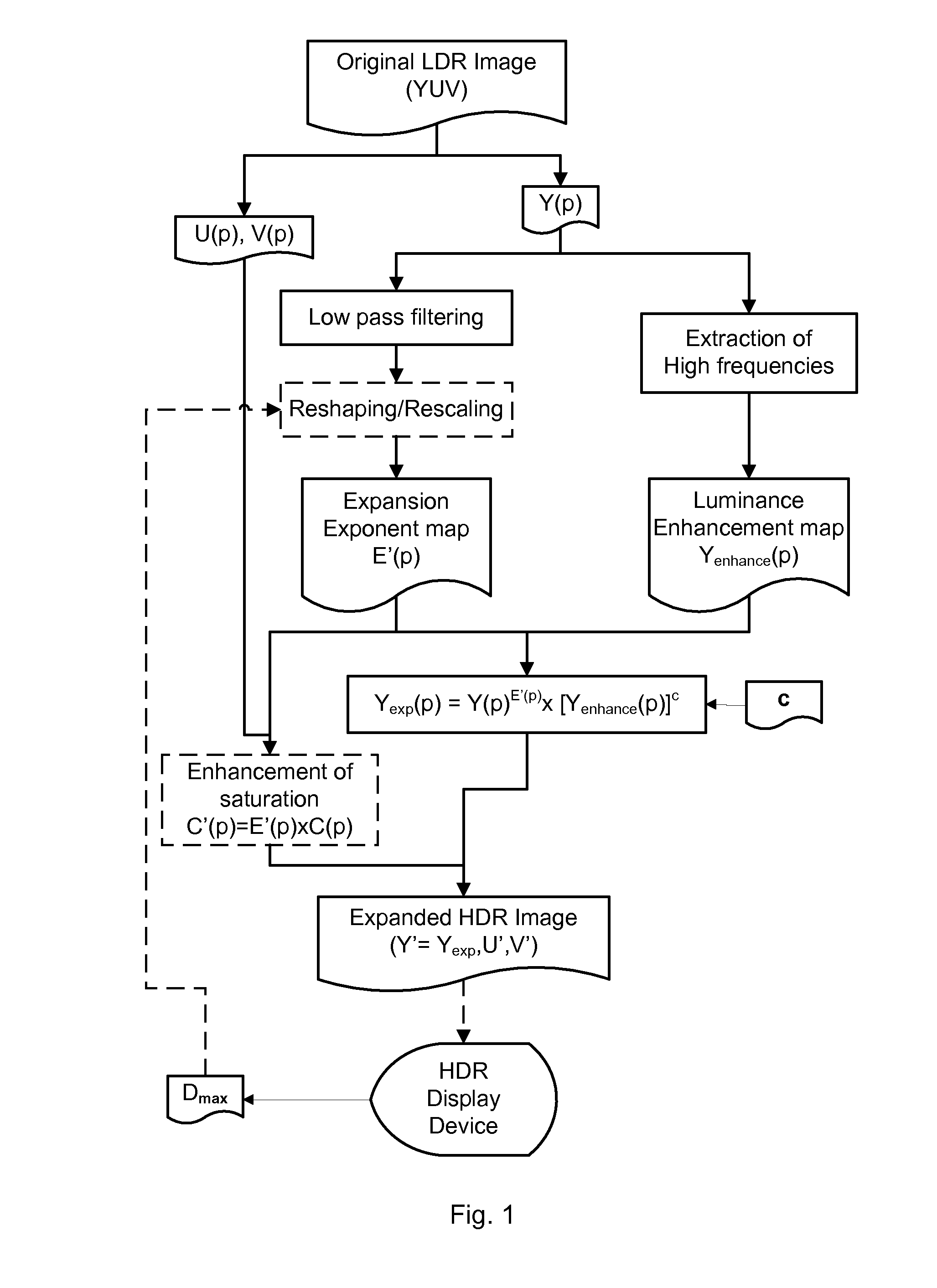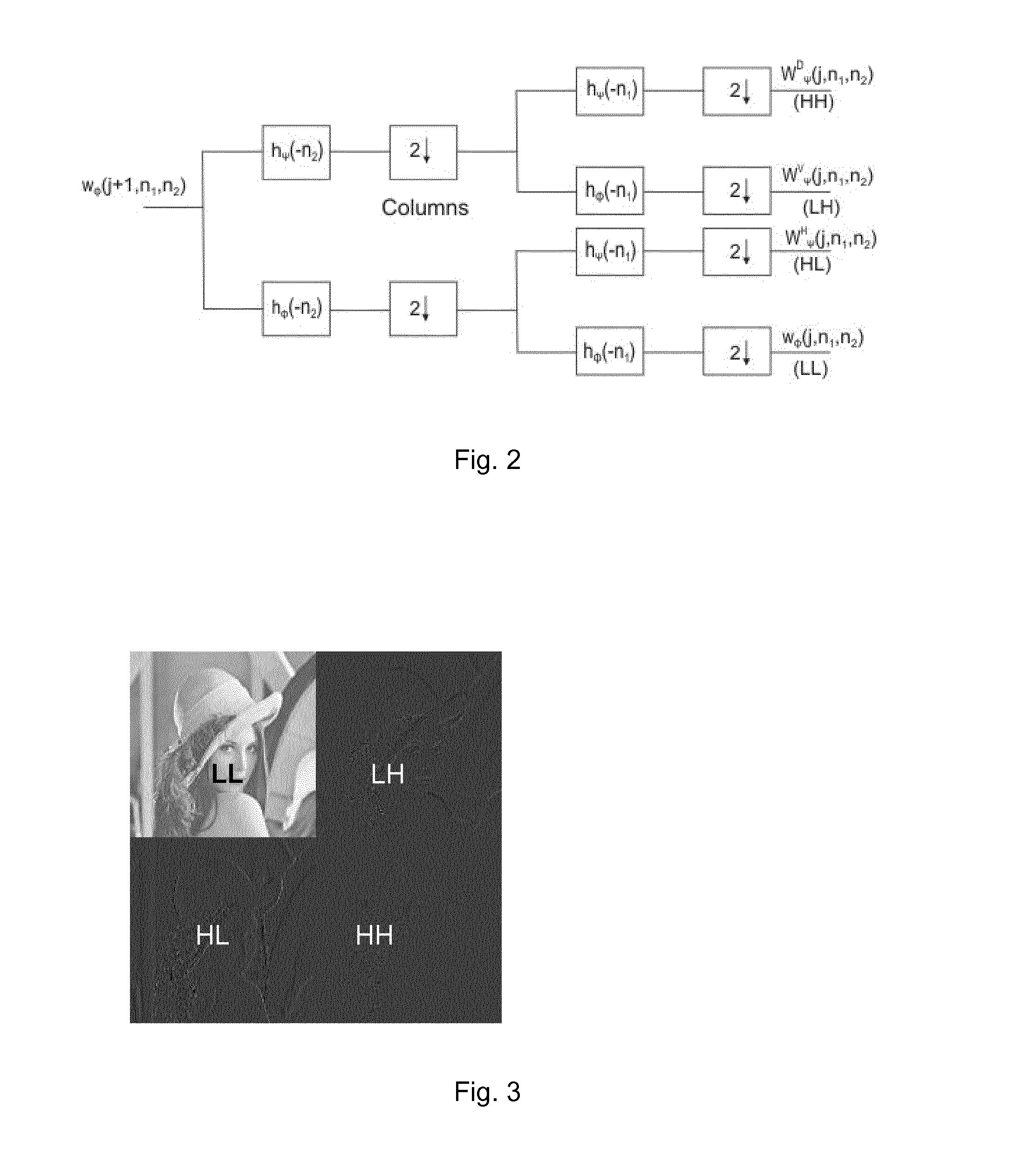Method for inverse tone mapping of an image
a technology of image and tone, applied in the field of high dynamic range imaging, can solve the problems of not addressing existing content, unable to offer sufficient control over the appearance of images, and still very limited hdr content available, and achieve the effect of increasing the dynamic range and enhancing the hdr appearance of conten
- Summary
- Abstract
- Description
- Claims
- Application Information
AI Technical Summary
Benefits of technology
Problems solved by technology
Method used
Image
Examples
first embodiment
[0052]the method for the inverse tone mapping of an image will now be described in reference to FIG. 1, using the image processing device as described above.
[0053]Using for instance an image receiver, an image is received with all data related to colors of each pixel, wherein the color associated with each pixel of this image is encoded into three color coordinates, i.e. one color coordinate for each color channel, R, G and B.
[0054]In a first preparation step of this embodiment (not shown on FIG. 1), the received RGB color coordinates of these colors are, if needed, normalized and optionnaly linearized in a manner known per se, such that the colors of the received image are represented in the RGB color space of a display device. This RGB color space can be standardized, and the corresponding display device is a virtual one. Then, these colors are converted to a color space separating luminance from chrominance, for instance the YUV color space. This conversion of colors from the RGB...
second embodiment
[0112]the method for the inverse tone mapping of an image will now be disclosed, using an image processing device as described above, but configured specifically to implement this embodiment.
[0113]When compared to the first embodiment, the only differences concern:
[0114]the second step of obtaining, for each pixel p, a pixel expansion exponent value E(p) by low pass filtering the luminance values of pixels in a spatial neighborhood of the pixel p,
[0115]the fourth step of extracting high spatial frequencies to obtain a pixel luminance-enhancement value Yenhance(p) for each pixel p of the image.
[0116]In this second embodiment, the colors are received as sets of three color coordinates representing these colors in a color space separating luminance from chrominance, for instance the YUV color space. Again, any other color space separating luminance from chrominance can be used instead. Therefore, a luminance value Y(p) and two chrominance values U(p), V(p) are associated to the color o...
PUM
 Login to View More
Login to View More Abstract
Description
Claims
Application Information
 Login to View More
Login to View More - R&D
- Intellectual Property
- Life Sciences
- Materials
- Tech Scout
- Unparalleled Data Quality
- Higher Quality Content
- 60% Fewer Hallucinations
Browse by: Latest US Patents, China's latest patents, Technical Efficacy Thesaurus, Application Domain, Technology Topic, Popular Technical Reports.
© 2025 PatSnap. All rights reserved.Legal|Privacy policy|Modern Slavery Act Transparency Statement|Sitemap|About US| Contact US: help@patsnap.com



